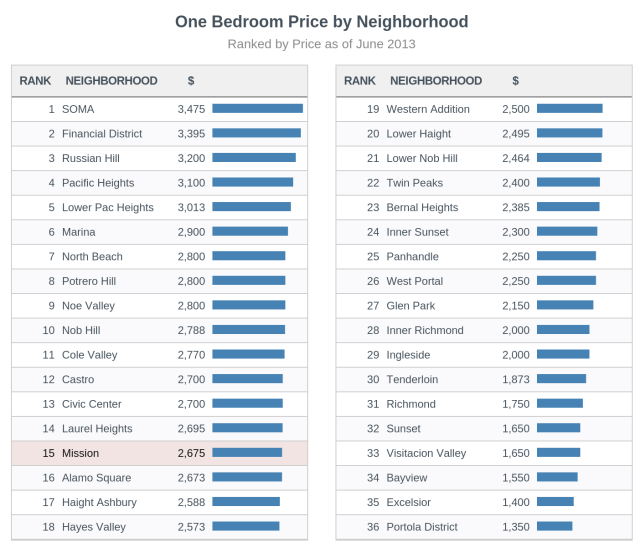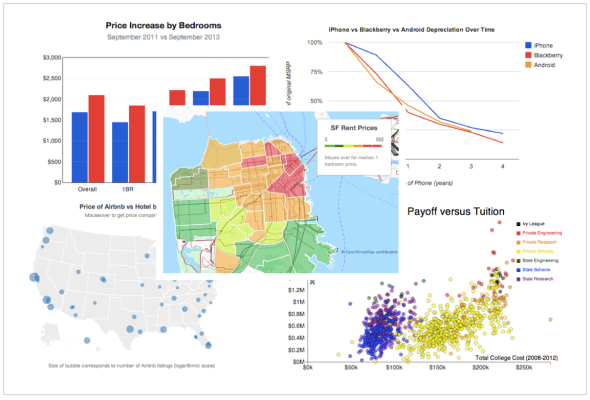Stop what you’re doing and read “Diamonds Are Bullshit” or “What Happens To Stolen Bicycles?“. This is content marketing, and Priceonomics is very good at it. So good that today the Y Combinator startup announced it’s pivoting from price guides to blogging, or more accurately, the web scraping and research it does to inform its blogging.
If only we could all quit our* crummy jobs and do what we love. That’s what Priceonomics co-founder Rohin Dhar has done. He launched the startup in December 2011 with a mission to bring new information into the world. It offered price guides for over 70 types of used goods. How much should I pay for an old iPhone 4S now? How much should I sell my Bianchi Pista fixie bike for? The idea was that if it was where people went to research big purchases, it could coin off of sponsored search results, traditional display ads, or affiliate links.
But in trying to gain traffic for its price guides, Priceonomics found its true calling: Blogging. The startup would investigate a topic like Airbnb rates, wine prices, where couples meet, and the rent of neighboring cities. Then it would write a data-driven blog post about it hoping virality would kick in and bring new users to its guides.

The problem was that at the end of the day, it was Google that determined the fate of Priceonomics. It needed to appear at the top of search results for queries about used good pricing. Dhar tells me “The only way the price guide would work is if we dominated SEO. We decided that a business model where we control our own destiny opposed to relying on Google to send us traffic was something we felt better about.”
As Dhar wrote in a post announcing the pivot today, “Since we crawled such varied sources of data, we started building generalizable tools for data extraction from the web so that our lives would be easier. We got pretty good at crawling data.” So, “Today, we’re launching Priceonomics Data Services, our new data arm that helps companies crawl and structure data from the web. If you’re a company that needs to get data from the web, we can help.”
It seems like a smart move, considering Priceonomics still had a good chunk of the $1.5 million seed round it raised from Andreessen Horowitz and SV Angel in the bank. And it’s already making more than it ever did in price guides. Thanks to clients including its Y Combinator brethren and contracts that typically run from $1,000 to $5,000 dollars a month, Dhar writes “Within a month, we booked over six-figures in (annualized) revenue.”
Dhar lays out the future of his company in certain terms:
“So what does all this mean for this blog? Good things! We just need to write smart things and hopefully a small fraction of our audience will hire us for data-related services. Making great content matters to us and we’re going to double down on it. What does this mean for our original consumer price guide for used products? Bad things! We got rid of it over a month ago. Its traffic and engagement was small relative to this blog and its revenue was negligible relative to our data crawling service.”
But can the web crawling business be a home run for investors if it has to work individually with each client? Dhar claims its can. “Typically the way companies get data is starting from scratch every time. They used to have an engineer or two full-time working on this. That’s what we were doing, but then we started building the tools to make it more scalable.”
Priceonomics Data Services will be going up against competitors like PromptCloud and Scrapinghub. It sees plenty of use cases for its services, though, such as investors tracking all the little moves made by big public companies. Dhar tells me “People are using [Priceonomics Data Services] the way they use Bloomberg — to make better investment decisions.”
Structured data crawling tools might not be as glamorous as helping people buy their next iPhone or sell their last one. And perhaps the best-case scenario for its new B2B model isn’t quite as financially lucrative for the startup and its investors. But at some point you have to know when Plan A is failing and go with your gut. Dhar concludes “This is a manifestation of bringing new information into the world, but for businesses.”
Some of my favorite Priceonomics blog posts:
Making A Living Collecting Cans
What Happens To Stolen Bicycles?
*Your crummy job. I get to write like this for a living and I love it.
